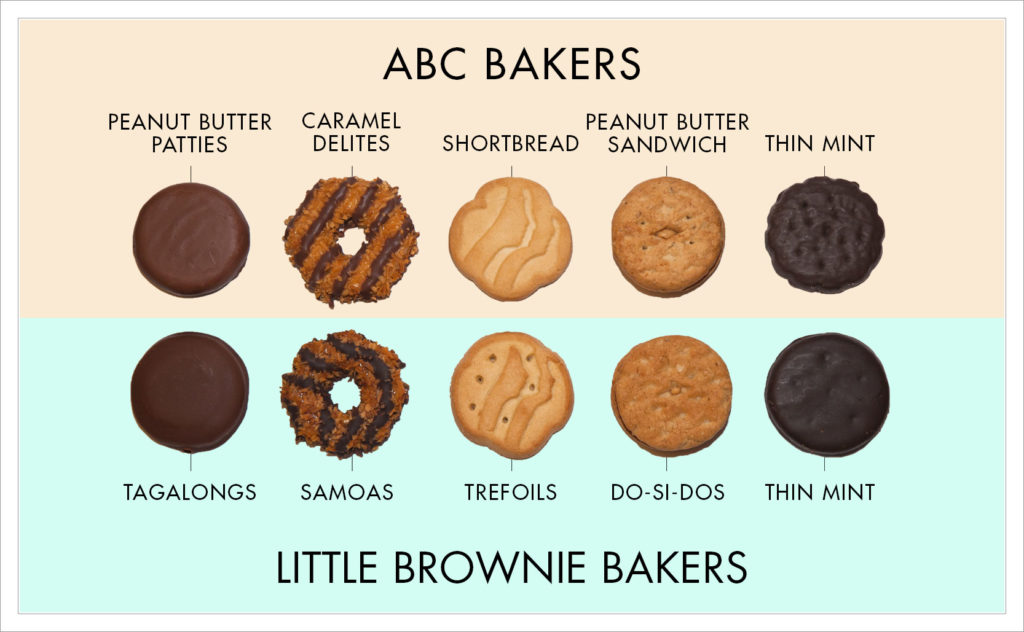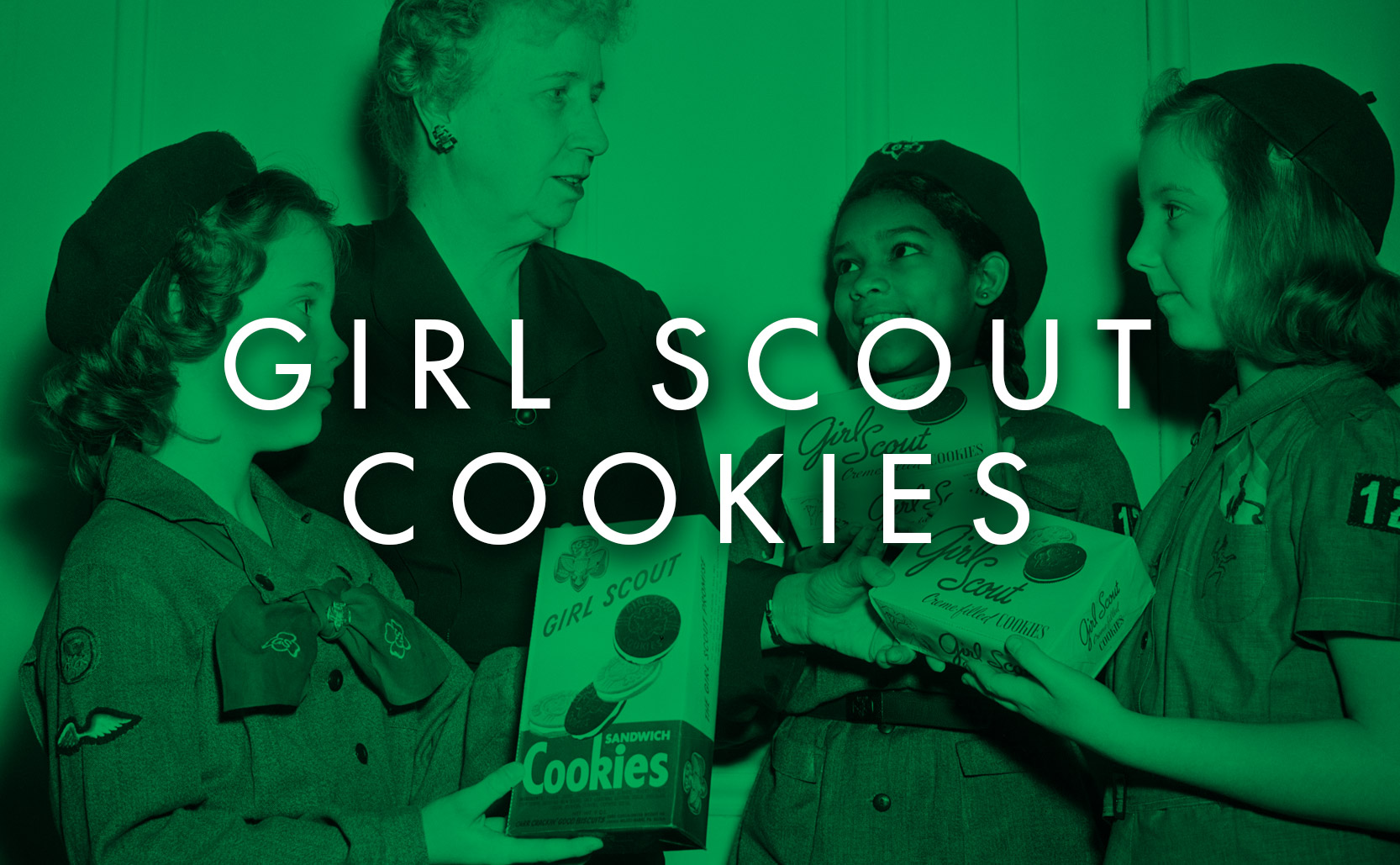Girl Scout Cookies
Most Girl Scout cookies go by two names because the cookies are made by two different bakeries.
The Girl Scouts of the USA were formed in 1912 as an organization for young girls to learn skills and build friendships. As a fundraiser in 1917 the Mistletoe Troop of Muskogee, Oklahoma began selling homemade cookies. Selling cookies was so successful troops nationwide began to do the same. In 1933 Girl Scouts in Philadelphia worked with a commercial bakery to mass produce 100,000 boxes of vanilla cookies (which later became Trefoils) and by 1936 the Girl Scouts organization were using commercial bakeries around the country.
Depending on where you are in the United States, your cookies are made by one of two commercial bakeries:
- ABC Bakers (a division of the Canadian corporation George Weston Limited), or
- Little Brownie Bakers (a division of the Italian Ferrero Group)
Because of the two bakeries the cookies have different recipes and different names. As a result, what some know as Samoas, others know as Caramel deLites. What some know as Tagalongs, others know as Peanut Butter Patties. The newer cookies retain the same name regardless of bakery, as does the classic Thin Mint. As for the most popular Girl Scout cookie, at 25% of sales, it’s Thin Mint.

Also: The Girl Scout logo is framed in a shape known as a trefoil (basically three overlapping circles) but with an additional stylized tail at the bottom to emulate the look of clover. The Little Brownie Bakers have labeled their version of shortbread cookies Trefoils as a nod to this branding. In the ABC Bakers version of the cookie, named Shortbread, the cookies’ form is less trefoil and more quatrefoil as it is basically four overlapping circles.


